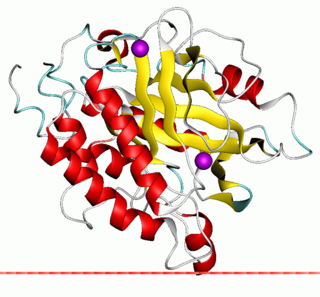| multiple inositol-polyphosphate phosphatase | |||||||||
|---|---|---|---|---|---|---|---|---|---|
| Identifiers | |||||||||
| EC no. | 3.1.3.62 | ||||||||
| CAS no. | 116958-30-6 | ||||||||
| Databases | |||||||||
| IntEnz | IntEnz view | ||||||||
| BRENDA | BRENDA entry | ||||||||
| ExPASy | NiceZyme view | ||||||||
| KEGG | KEGG entry | ||||||||
| MetaCyc | metabolic pathway | ||||||||
| PRIAM | profile | ||||||||
| PDB structures | RCSB PDB PDBe PDBsum | ||||||||
| Gene Ontology | AmiGO / QuickGO | ||||||||
| |||||||||
The enzyme multiple inositol-polyphosphate phosphatase (EC 3.1.3.62) catalyzes the reaction
- myo-inositol hexakisphosphate + H2O myo-inositol pentakisphosphate (mixed isomers) + phosphate
This enzyme belongs to the family of hydrolases, specifically those acting on phosphoric monoester bonds. The systematic name is 1D-myo-inositol-hexakisphosphate 5-phosphohydrolase. Other names in common use include inositol (1,3,4,5)-tetrakisphosphate 3-phosphatase, inositol 1,3,4,5-tetrakisphosphate 3-phosphomonoesterase, inositol 1,3,4,5-tetrakisphosphate-5-phosphomonoesterase, inositol tetrakisphosphate phosphomonoesterase, inositol-1,3,4,5-tetrakisphosphate 3-phosphatase, and MIPP. This enzyme participates in inositol phosphate metabolism.




